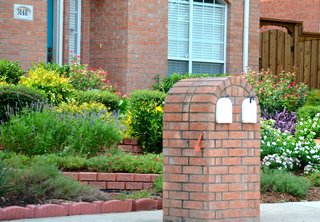Masonry is amongst the oldest and quite a few durable construction methods, often observed in brick homes, stone walls, chimneys, and walkways. While masonry was created to last, it isn’t proof against damage. Over time, weather, moisture, and shifting foundations might cause cracks, crumbling mortar, or loose bricks. Masonry repair is vital to restore the structural integrity and look and feel of these features.
What Is lone star masonry?
Masonry repair means process of fixing damaged brick, stone, or concrete structures. It can cover anything from minor cosmetic fixes to extensive structural work. The goal is usually to prevent further deterioration and extend the life span of the structure.

Common Masonry Issues
Cracked Bricks or Stones
Caused by settling foundations, temperature changes, or water infiltration. Cracks can compromise stability and let in moisture.
Crumbling or Missing Mortar (Tuckpointing)
Mortar joints break down over time because of weathering. Tuckpointing involves detaching the old mortar and replacing it with fresh mortar.
Spalling Bricks
This occurs moisture enters bricks, causing them to flake, chip, or falter, often affecting chimneys and foundations.
Bulging or Bowed Walls
Often due to water damage or shifting soil behind a wall. This is a major problem that may require structural reinforcement.
Efflorescence
A white, powdery residue at first glance of bricks a result of salt deposits from water. While mostly cosmetic, it signals moisture problems.
Types of Masonry Repair
Tuckpointing (Repointing)
Removes deteriorated mortar and replaces it with new, color-matched mortar.
Strengthens walls and improves appearance.
Brick Replacement
Damaged or spalled bricks are removed and substituted with new ones.
Blends seamlessly with existing structures.
Crack Repair and Sealing
Small cracks are stuffed with mortar or epoxy to avoid further damage.
Larger cracks may necessitate structural correction.
Waterproofing
Application of sealants to prevent water infiltration.
Helps prevent freeze-thaw damage in colder climates.
Chimney Repair
Involves fixing loose bricks, repointing mortar, and sometimes rebuilding chimney crowns or flues.
DIY or Hire a Pro?
Minor cosmetic repairs could be tackled by experienced DIYers, in particular when tools and materials are accessible. However, structural issues, or repairs involving high areas like chimneys and facades, might be best left to professional masons.
Professional masons bring:
Knowledge of historic and modern masonry techniques
Proper tools and safety equipment
Ability to match existing materials for any seamless look
Prevention Tips
Inspect annually for cracks or loose mortar.
Keep water away with proper drainage and gutters.
Seal masonry in moisture-prone areas.
Fix small issues early before they become structural.
Conclusion
Masonry repair is an important part of home and building maintenance. Whether it’s a straightforward tuckpointing job or even a full restoration, keeping your brick or stonework in top condition protects your property’s value and look. If you're noticing signs of wear, don’t wait—addressing problems early can help to save time, money, and headaches later on.
